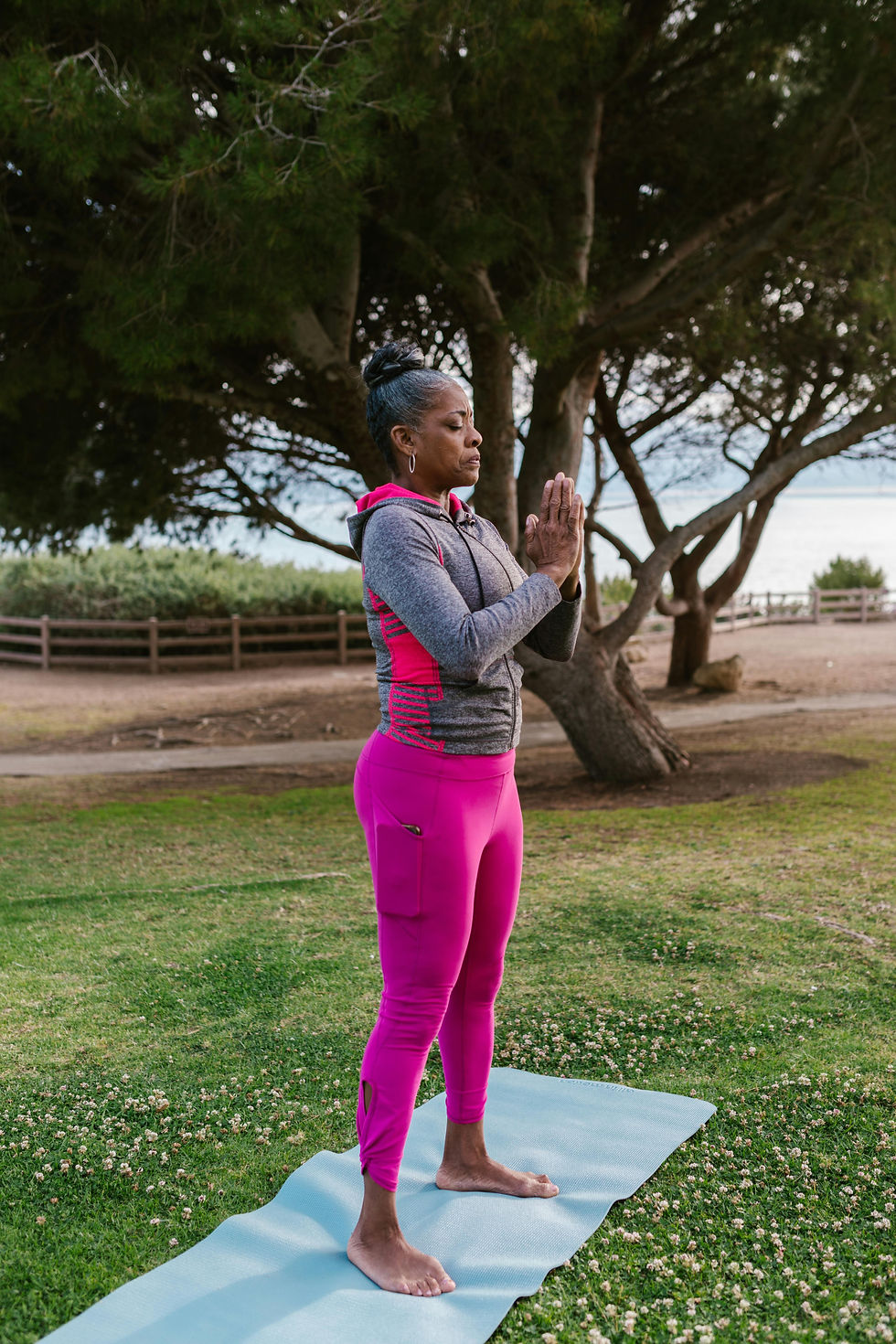How Prolapse Relates to Hip, Back, or Tailbone Pain
- Dr. Sasha Speer, PT, DPT
- Sep 18
- 4 min read
Updated: Nov 19
If you’ve ever been told you have prolapse—or you’re wondering if that pressure, heaviness, or “falling out” feeling could be related—there’s something you should know:
Pelvic organ prolapse doesn’t just affect the pelvic floor. It can also show up as hip, low back, or tailbone pain.
We often hear patients say, “I thought my back pain was just from posture or lifting my toddler funny. I had no idea it could be connected to my prolapse.”

Let’s break it down so you can understand what’s really going on and how pelvic floor physical therapy can help.
What Is Pelvic Organ Prolapse (POP)?
Prolapse happens when one or more pelvic organs (bladder, uterus, rectum) shift downward and place pressure on the vaginal wall. This often occurs when the pelvic floor muscles and connective tissue aren’t offering enough support—due to pregnancy, childbirth, chronic straining, or even years of high-impact activity without adequate core control.
Common prolapse symptoms include:
A sensation of pressure or heaviness in the pelvis
A bulging or “something is there” feeling in the vagina
Difficulty starting or completing a bowel movement
Feeling like things are worse at the end of the day or after standing for long periods
Urinary urgency, frequency, or incomplete emptying
But What About the Hip, Back, or Tailbone Pain?
Here’s where it gets interesting—and important. The body is an integrated system, and the pelvic floor doesn’t function in isolation. When prolapse alters how pressure is distributed through the pelvis and core, other areas can start compensating or experiencing stress.
Let’s look at three key connections:
1. Low Back Pain
Your pelvic floor works closely with your deep core muscles—including your transverse abdominis and multifidus—to stabilize your spine. When pelvic organ support is compromised, your posture may shift subtly to reduce pressure or discomfort.

These postural changes can strain the low back and lead to chronic tightness, instability, or fatigue.
You might notice:
Achiness after long periods of sitting or standing
Back pain that feels worse after lifting or exertion
A sense that your “core just isn’t working like it used to”
2. Hip Pain
The hip and pelvic floor muscles share connective tissue and fascial relationships—meaning they often influence each other. If your pelvic floor is overactive (common in people with prolapse trying to "hold things in") or weak and under-supportive, the hip muscles can start overcompensating.
This can lead to:
Lateral hip pain (near the outer hip or glute area)
Deep buttock aching, especially after walking or climbing stairs
A feeling of imbalance or fatigue when standing on one leg
3. Tailbone Pain (Coccyx Pain)
The coccyx (tailbone) is directly connected to the pelvic floor via ligaments and muscles. With prolapse, altered mechanics and tension can pull on these structures, leading to tailbone discomfort—especially during or after sitting.
You might experience:
Pain while sitting, especially on hard surfaces
Sharp pain when transitioning from sitting to standing
Tenderness when pressing near the base of the spine
Why These Connections Matter
When we only treat prolapse as a pelvic issue, we miss the bigger picture. Pain in the hips, back, or tailbone may not improve until the pelvic floor and surrounding systems are addressed together.
That’s where pelvic floor physical therapy comes in.
How Pelvic Floor PT Helps with Prolapse-Related Pain
At Auria Pelvic Health, our approach goes beyond Kegels. We assess how your body is functioning as a whole—including:

Pelvic floor strength, tension, and coordination
Breathing patterns and core pressure management
Hip and low back muscle balance and mobility
Posture and movement habits
How your symptoms show up in daily life
Treatment may include:
Gentle pelvic floor training (not just squeezing, but coordinating!)
Core and glute activation to redistribute pressure
Manual therapy to release tight muscles or improve tissue mobility
Tailbone mobilization or desensitization techniques
Education on positioning and posture to reduce symptoms
Activity modifications so you can keep moving safely
We help you build the foundation of strength and support you need—while also giving
you tools to reduce pain and feel more confident in your body.
You’re Not Alone—And You’re Not Broken
If you’re dealing with prolapse and also have unexplained back, hip, or tailbone pain—it’s not a coincidence. It’s your body asking for support.
The good news? There’s so much we can do.
Pelvic floor physical therapy is a safe, evidence-based, and empowering way to address the root causes of discomfort—not just mask the symptoms.
Ready to Feel More Supported?
Whether you’ve been diagnosed with prolapse or just suspect something’s off, we’re here to listen and help. Let’s create a plan that meets you where you are.
Give us a call to get started.
Auria Pelvic Health
8929 S Sepulveda Blvd., Ste. 412
Los Angeles, CA 90045
Phone: 310-505-6096
Website: www.theaurialife.com

Article Written By Dr. Sasha Speer, DPT
#PelvicTherapy #PelvicHealth #PelvicFloorTherapy #PelvicPain #PelvicFloorExercises #PelvicRehabilitation #PelvicWellness #PelvicCare #WomenHealth #MenHealth #PhysicalTherapy #TherapeuticExercises #HolisticHealth #PelvicFloorDisorders #PostpartumHealth #IncontinenceTreatment #PainManagement #RehabilitationTherapy #BodyPositive #FunctionalMovement #SexualHealth #Postpartum #Pregnancy #CSection #PostpartumHealing #HipPain #TailbonePain #BackPain #VeniceBeach #Westchester #ElSegundo #BeachCities #SouthBay #LosAngeles #California #SouthernCalifornia




Comments